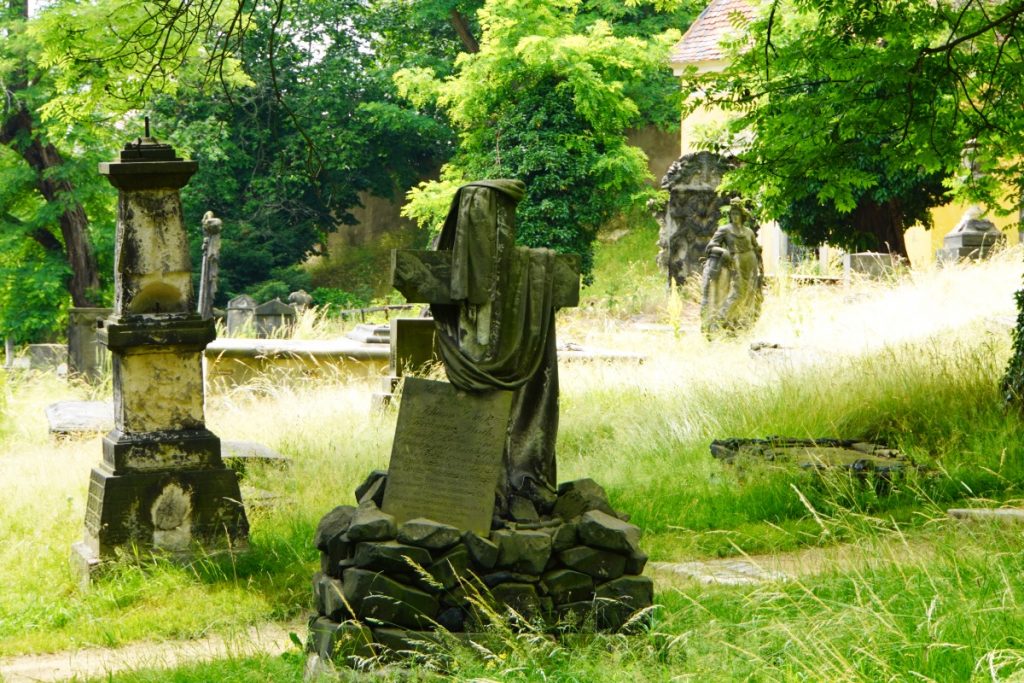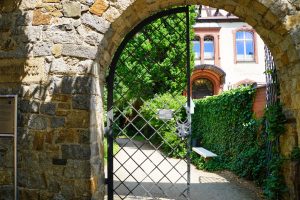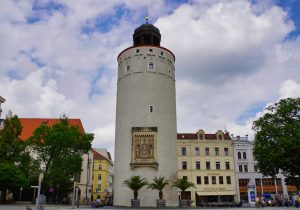Cemeteries have a very special attraction, telling the story of a region in a very different way. The Nikolaifriedhof in Görlitz dates back to the 12th century and there is much to discover.

The cemetery was first mentioned as Nikolaikirchhof (St. Nicholas’ churchyard) around 1305 in the city book of Görlitz. The churchyard was located around the predecessor of today’s Nikolai Church. Over time, the area was extended to include the area of the vicarage.
Until the opening of the town’s municipal cemetery (1847,) the cemetery was the town’s main burial ground. Here one finds rare examples of early modern Protestant burial culture with interesting graves and crypts. The epitaph inventory from the early 17th to the mid-19th century is also amazing.

Cemetery in the Reformation
Today, the Nikolaifriedhof shows us the Protestant graveyard as it was created in many places during the Reformation. At that time, Luther had called for the “fine, quiet place” that would serve the contemplation of death, the Last Judgement and the Resurrection. This is also reflected in many of his inscriptions, which refer to the temporary transience of earthly life. The notion that the intercession of a saint or ecclesiastical prayer was important for the salvation of the deceased gave way. Also, the funeral no longer had to take place in the immediate vicinity of the church. As a result, distinguished burial grounds of the well-heeled bourgeois families were built in all areas of the cemetery. In Görlitz, this was mainly the case in the newer western area, which had only belonged to the cemetery since 1624.

Walk through the Nikolai cemetery
Directly behind St. Nicholas Church, you enter the cemetery, which is situated on a hillside. A wide tree-lined path leads up the slope, with the grave plots to the right and left. Today, these are more like an overgrown meadow landscape, interrupted now and then by a recognisable grave site. Nature has reclaimed this terrain. Bees buzz around, squirrels jump from tree to tree – actually, the cemetery already looks more like a park.

If you stroll through the Nikolai cemetery in Görlitz, you can still discover over 800 gravestones and epitaphs from the early 17th century to the middle of the 19th century. Each tomb is stylistically unique and you can see the different influences of the Baroque, Rococo and Classicism. Somewhat “newer” gravestones can be assigned to Romanticism and Historicism.
If you look at the material of the gravestones, you will discover Silesian sandstone and Elbe sandstone. You will also find cast iron with attached letters, the first signs of industrial prefabrication. The inscriptions on the stones are often not limited to the names and dates of the dead. One also finds religious texts and many pictorial motifs linked to Christian virtues. Some of the gravestones are now so weathered or overgrown that it is difficult to read the inscriptions.

The 17 still preserved burial houses in the Nikolaifriedhof are something special. The oldest house dates from 1618, most of them were built around 1700. I have read that the interiors of the crypts were often very splendidly decorated, but it is not possible to look inside. The outside of the crypts is just as varied as the gravestones.

Jakob Böhme
Following a sign in the cemetery, I came to the rather plain grave of probably the city’s most famous son. The theosophist Jacob Böhme (1575-1624) was buried in the Nikolaifriedhof. If you are out and about in Görlitz, you will come across his traces again and again.

Film location
The cemetery is one of many filming locations in Görliwood. I can very well imagine that this setting inspires filmmakers. The right light, the right script and the right actors create unique moments, from a creepy horror shoot to a mystical location.
The Nikolai cemetery can be seen, for example, in the German-French film “Frantz”. Scenes from the crime series “Wolfsland”, produced by ARD and MDR, were also filmed here.















Leave a Reply